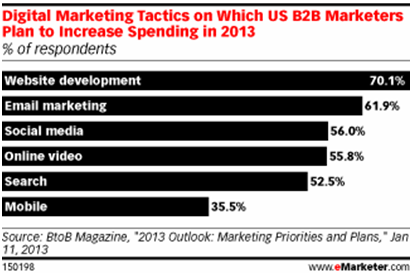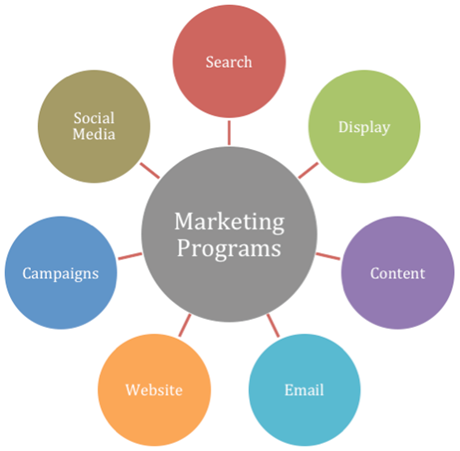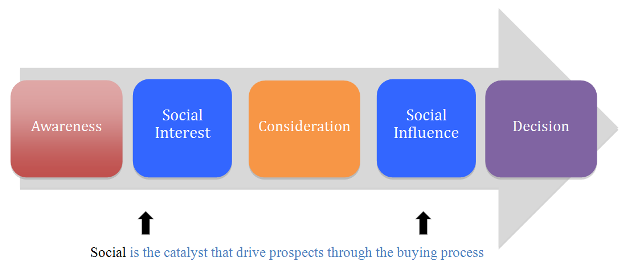Today’s B2B marketers increasingly feel the pressure to quickly adopt social media and integrate it into their daily marketing activities. It’s not just the internal pressure from leadership but the constant bombardment of sales reps from the hundreds of vendors now pushing social media tools, analytics platforms, engagement platforms and lead generation programs. This pressure pushes most B2B marketers to make quick decisions based purely on resources and budget.
A November 2012 study by Eloqua “How Do B2B Companies Use Social Media For Marketing? [INFOGRAPHIC],” polled 548 B2B marketers about their approach to social media within their organizations. The survey finds that 36 percent of marketers say their organization doesn’t use social media whatsoever. And of those organizations that do use social media (the other 64 percent) there is some confusion as to exactly who is in charge of the tweeting. Twenty-six percent of those polled say that the PR and communications department owns social media, 11 percent pass the ownership to their website team and 23 percent share the responsibility between multiple departments.
According to BtoB Magazine‘s 2013 Outlook: Marketing Priorities And Plans survey, more than half of U.S. business to business (B2B) marketers plan to increase spending on their social media budget in 2013. The survey reveals that their marketing spend on channels such as Twitter, LinkedIn and Facebook will rise in 2013.

With this increase in spend and continued emphases on social media, many B2B marketers still take the traditional method to integrate social media. Like most marketers, they take the route of just adding on another line of business and typically assign a team resource whose time will be spent posting and responding within social media platforms in isolation. This means that their time is spent building out the company Twitter, Facebook, LinkedIn and Google+ pages all with the goal of curating content and posting witty questions in the hopes of driving likes, shares, comments and +1s. But this methodology tends to dry up because it is all done in isolation.

Traditional Social Media Integration
Most social media companies also reinforce this traditional thinking as their sales reps focus their efforts on just selling advertising programs and lead generation campaigns. A typical sales spiel focuses on how many visitors the program can bring and how much engagement it may create, but again this is all still done in isolation. This strategy lacks long-term vision and long term success, especially as budgets are placed under scrutiny and marketers are forced to measure a return on investment. Because social media in isolation requires budget and very minimal quantifiable return at the bottom of the funnel, it is usually given credit as a feeder to the top of the funnel but that is usually quick to the chopping block when things get tight.
Granted, social media is a viable way to feed the funnel and drive more traffic but social media is much more than feeding the funnel. Social media is the enabler that drives engagement through the funnel by offering social interest and social influence during the buying cycle. So the best way to create value through social media programs is to understand its integrated value.

Social media alone using organic content creation and engagement holds value but definitely only in the short term. Without an integrated approach, social media programs will fail. If you integrate social media with your other marketing programs, then the long-term success will show a value that is more than just feeding the funnel but it will show social media as the catalyst that enriches and drives prospects through the funnel.
Here is an example of how social media can be integrated with each existing marketing program:
- Search – Based on the latest SEO techniques, social signals hold a large impact on a website’s search engine rankings. Working with your search team on aggregating the influence from each of your social platforms will prove great success
- Display – Referencing and mentioning recommendations and engagement from your social platforms in your display messaging can be key to increase click-through rates on social. And directing your display to your company’s social media sites can help reinforce the message in the display ad
- Content – Creating socially-centric content can help drive both the engagement and virality of your content. Also using authors with high authority can boost the reach of your content
- Email – Using social media links as secondary or tertiary calls to action or social media references can offer a higher click-through or engagement rate on your emails as it supports the primary call to action and messaging
- Website – socializing your website is a heavy undertaking but can be the key driver to increase visitor engagement and conversion on your website. More than just sharing and liking, but using a social sign-in, references and recommendations can positively drive conversion on your website
- Campaigns – Building campaigns that are outbound focused and targeted at a generic mass market are destined for failure. But using social media as your syndication method and focusing engagement around a specific social personas allows your campaign to best appeal to your audience and drive the engagement beyond just an impression and click-through

Advanced Social Media Integration
Imagine if your social media sales rep approached a product pitch by first understanding your internal marketing programs and integrated marketing strategies and then took the time to explain how their social media programs complimented and fit in to each existing program. This level of integration would quickly and clearly be adopted by your marketing leadership, have a higher and more notable impact on revenue and exist within a long-term strategy.
With so many factors affecting the long-term success of your social media programs, it is best to always use a strategy that identifies social media as the key success factor and driver for every other marketing program. So, take the time to learn from other teams in your marketing org and determine how social media can best integrate in your other marketing programs.
http://www.theessentialmarketer.com/2013/03/14/how-to-integrate-social-media-into-your-marketing-programs/?utm_source=rss&utm_medium=rss&utm_campaign=how-to-integrate-social-media-into-your-marketing-programs



No comments:
Post a Comment